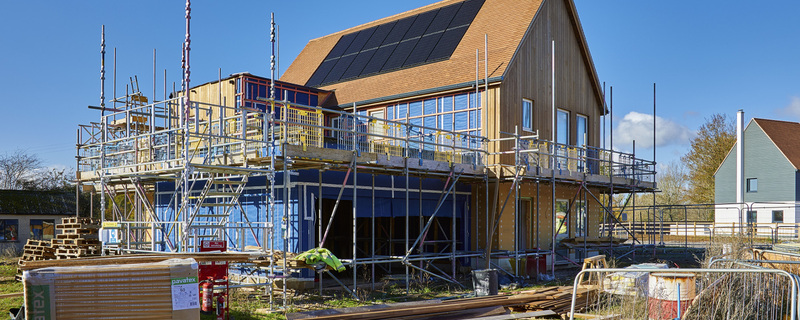
According to the latest import statistics, the forest industry is returning to a period of stability compared to recent years. However, broader forecasts for the construction industry indicate a sharp drop in production. This article examines what this means for different sectors of the forestry industry.
It is rare for most imported wood and board products to record their best month of the year at the same time. But this happened in May 2023 – the latest month for which data is available. Imports of softwood, hardwood, plywood, chipboard, and wood products were higher than any of the previous months of 2023. The import of coniferous wood showed particularly positive results, with volumes in May exceeding the average indicators of 2023 by 8%. In the long run, the monthly fluctuations seem to be stabilizing after three years of sharp fluctuations.
While continued weakness in the construction industry and poor overall economic performance have dampened demand for wood and sheet products, some sectors have defied the current trend. One of these is the import of planed spruce. While total softwood imports in 2023 are 6% lower year-to-date, spruce planed is up, albeit modestly, by 1.4%. The exporting countries that are ahead of the market and generating such growth are Sweden and Latvia. 2023 OSB imports are 26% higher than 2022 year-to-date and higher than any year this century except 2021. Another growth product along with OSB in 2023 to date is MDF, with imports up 5% over the first five months of 2022. Imports of MDF now exceed chipboard, OSB, hardwood, softwood plywood, and hardwood plywood. Growth of 5% occurred in Ireland, Germany, China, and Brazil with double-digit growth rates in 2023.
May 2023 was also the best performing month for all softwood imports. Imports in each of the first four months of 2023 were below the average for each month over the past four years. However, in May 2023, the situation changed. The import of softwood for the month exceeded the five-year average by 8% in May. This compares well with lower imports in the second half of 2022.
The overall economic picture in Great Britain is bleak, with const ant inflation and high interest rates reducing confidence in the construction sector. This can be seen in the latest forecast by the Construction Products Association (CPA), which sees key sectors driving demand for timber such as private housing and renovation, maintenance, and improvement (RMI) falling by 19% and 11% respectively, before likely returning to growth in 2024. The latest CPA State of Trade Survey for Q2 2023 showed a continuing performance gap in the construction products industry. Heavyside manufacturer sales declined for the fourth consecutive quarter, while Lightside manufacturer sales registered another quarterly increase that began in Q3 2020. Looking ahead to the next 12 months, 14% of lumber producers expect sales to fall while 46% of manufacturers of other materials for the home expect growth.